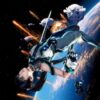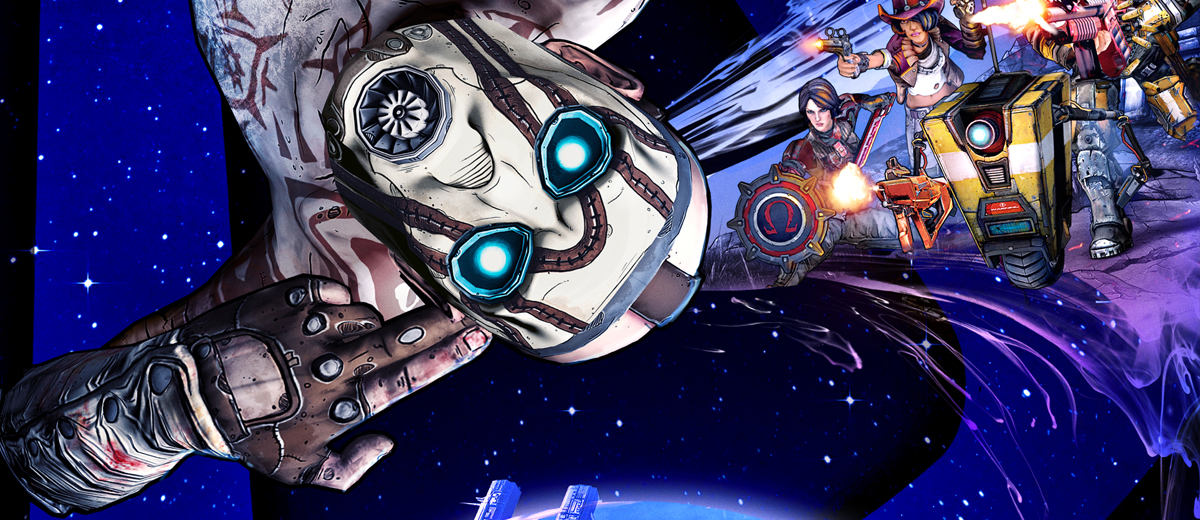
True to name, Borderlands: The Pre-Sequel takes place after not only before Borderlands 2, but time skips to ahead. The narrative frame is set as the Vault Hunter Athena (any DLC players from Borderlands 1 will recognize her) is set to be executed by the original gang of Vault Hunters (Lilith, Brick and Mordecai), taking place sometime after Borderlands 2. The time skips back to before Borderlands 2 as Athena recounts her story, setting the story as truly, a pre-sequel. While this sort of narrative trick has been done countless times, it’s not unwelcome as there’s a lot of opportunities to inject some humour into the narrative, as the old Vault Hunters chime in with their opinions and exclamations whilst Athena recounts her story.
There is a lot of focus on one Handsome Jack before the Handsome: one of the more memorable villains in the franchise, he’s given a lot of screen/voice time as he slowly evolves into the pretentious asshole that eventually becomes the big baddie of BL2.
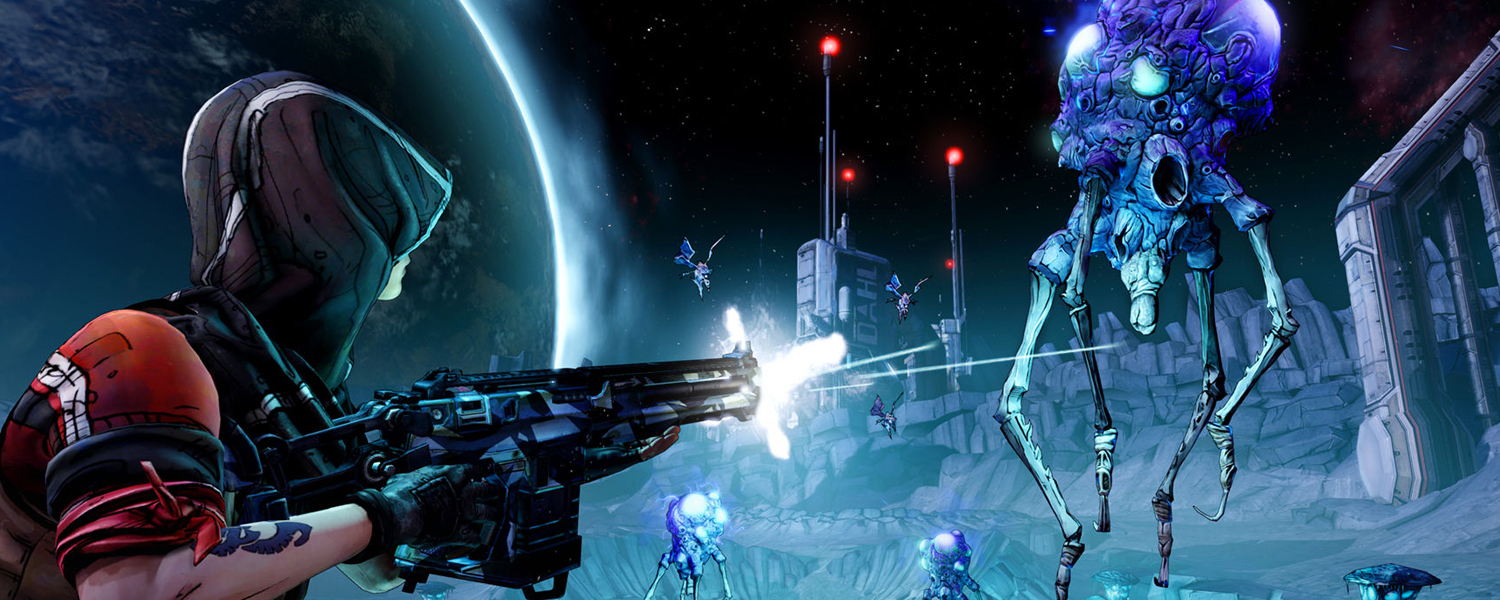
There are few memorable characters outside of the old bunch (Mad Moxxi, Vault Hunters, prototype Claptrap, etc) but the new gang of Hunters are surprisingly well focused and interact with each other to really make it feel like they’re a group working together. Previous instalments lacked this sort of touch, and it was enjoyable to see Athena interact with Wilhelm or Nisha. Each Vault Hunter has appeared in some form in previous games, so fans will immediately recognize the playable characters. Nisha appeared in Borderlands 2 as the sheriff of Lynchwood, Athena appeared in The Secret Armory of General Knoxx (BL1), Claptrap is pretty much the mascot of the franchise and Wilhelm was the major second boss of BL2.
Doctor Zed is of course missing, replaced by Nurse Nina, but they’re both equally annoying and disposable. Janey Springs acts as the new mechanic, and she’s well written and has some genuinely funny lines. Otherwise, there aren’t too many memorable new characters. The story falls flat outside of genuinely funny character moments, and it’s simply not very engaging throughout the 15ish hours you’ll spend on the moon of Elpis.
Humour is also way more inconsistent than in Borderlands 2. For every moment where I laughed out loud or smiled at the smart jokes, I cringed and groaned at twice as many. Quests are written pretty poorly to the point where I didn’t feel like doing many. I thoroughly did enjoy the Australian focused humour, which could very well be the best part of the game. There are some really shallow digs, but some really smart ones as well that’ll have any Aussie bloke or sheila laughing. Overall it feels like it was written by a B-team, or the normal writing team who didn’t bother. Weak jokes drown out the strong ones, there are some downright awful and cringey dialogues, quests are terribly written; it’s simply not an engaging story.

There’s honestly not much to say in this department, since the Pre-Sequel uses the same engine and pretty much looks exactly the same as Borderlands 2. Surprisingly enough, I encountered a lot more bugs and glitches than I did in BL2, which is just surprising. Textures are average, lighting system is outdated, there are a lot of shadow issues and the environment feedback to weapon fire or interaction is bare minimum.
Environments look a bit better than in previous games, in a creative sense. The moon of Elpis is genuinely good to look at and has some really wacky environments and architecture, at the start. Unfortunately the game doesn’t evolve, and soon you’ll be looking at the same old grey-moon-rock drab over and over again.
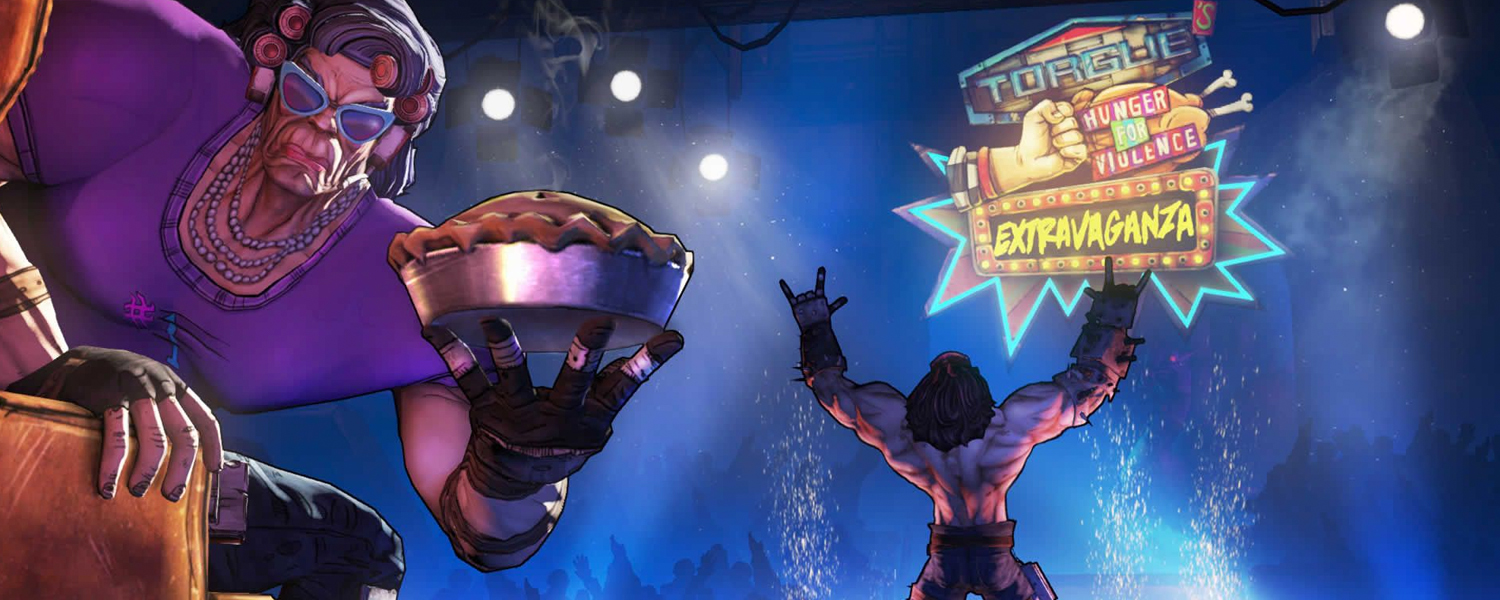
Like most old-gen titles, Borderlands: The Pre-Sequel is optimized for tri-core CPUs. It’s definitely not a demanding title, and midrange builds to beyond will easily squeeze a smooth 60fps out of max settings. Just make sure to avoid excessive Physx if your build is lower: On a GTX660 there was significant slowdown in huge firefights with Physx on high.
There a tonne of options to use, just like in the previous game. Ambient occlusion, bullet decals, colourblind mode, FXAA, it’s all here for the PC.
Overall, if you had no trouble with Borderlands 2, I see no reason why you would struggle with this one. It’s the exact same engine, just reskinned. And just like Borderlands 2, the outdated engine saves itself with a unique art style.

There’s very little to talk about Borderlands: TPS. It plays very similarly to the second game.
The biggest changes involve two new weapon types: laser and cryogenic. Both are not unwelcome additions, but they’re not gamechangers either. They’re both fun enough to use though, and I hope to see them permanently added to the roster in the next instalments.
In terms of characters, Claptrap is the only really unique player in the game. While the other characters have generic roles (Athena is treated as the melee tank class, Nisha is the enemy clearer and Wilhelm is the distraction) Claptrap has random unique traits, that all depend on the situation on hand. He can receive boosts from others, he can be a damage expert, and best of all is a skill that lets him use powers from other Vault Hunters depending on who he is fighting.
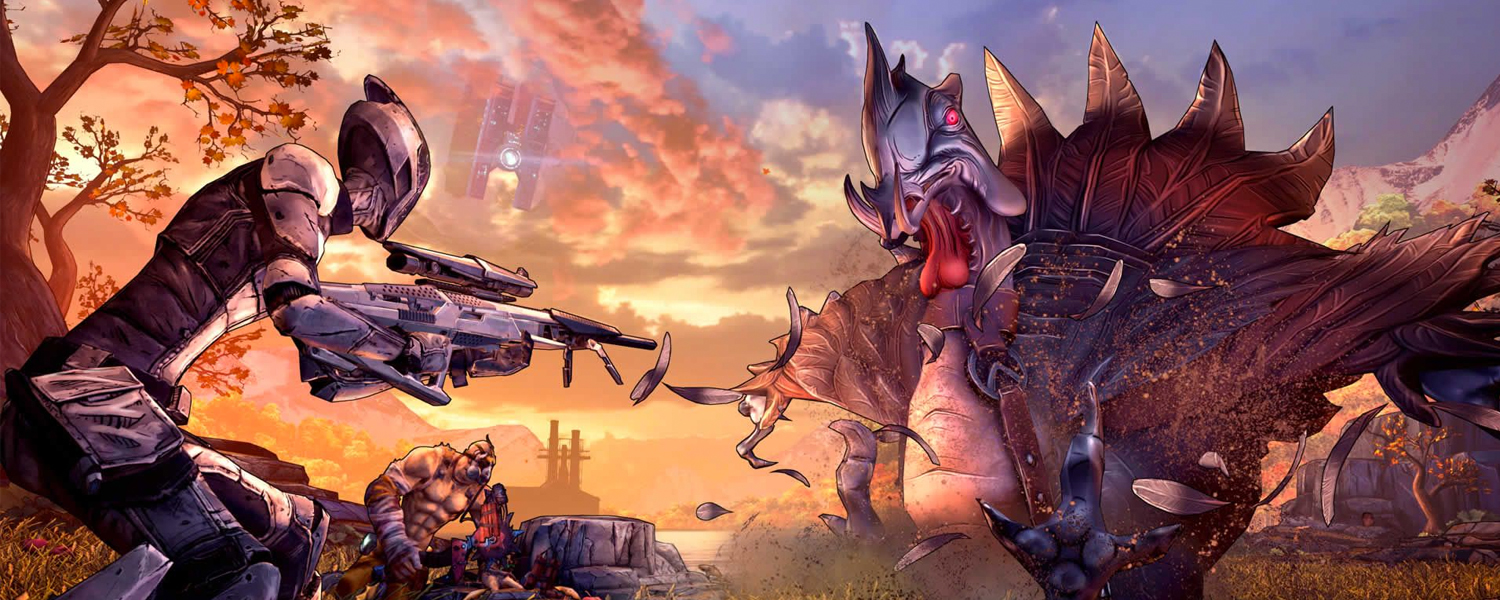
Since the game takes place on the moon, there’s a lot of gravity focused gameplay. You’re forced to juggle your oxygen usage, as there’s a limited supply when traversing environments outside of towns and mission hubs, and a specific ‘gravity slam’ attack that uses a lot of oxygen. Juggling oxygen usage isn’t a huge problem and the fun that leads to jumping in low-grav all over the place is worth the pain of recharging oxygen. O2 kits are also added to supply air when on the lunar surface; oxygen supplies can be replenished using generators, vents, and through oxygen tank items dropped by enemies. The kits can be used like a jetpack to perform double jumps, hovering, and ground slamming attacks; as with other items, different types of O2 kits can provide stat bonuses and affect how ground slams deal damage. I enjoyed the use of oxygen in this game- jumping high over enemies while shooting down upon them was a great strategy, and there were enough recharge stations and air vents around to make the O2 mechanic less burdensome. The low gravity allows for interesting exploration, as players’ platform their way across places that were either built for platforming or was pure level breaking.
Terrible issues from Borderlands 2 remains prevalent here, and it’s just a damn shame 2K Australia didn’t bother fixing the inventory, the skill systems or the maps. The inventory is a pure pain to navigate, and is incredibly cumbersome and clunky; its 2014, such an archaic form of RPG inventory should not exist in this sort of game. The skills systems are as broken as they were in Borderlands 2: some trees are heavily, heavily overpowered (Athena’s Aspis shield is fun to use but incredibly overpowered). Most skills are useless (+1 ammo, +1 damage) but the useful skills are overpowered. It’s a balance issue of filling out the skill tree with useless ones, and it remains broken in this game. And the map system, already known for being terrible, is even worse due to the increased amounts of platforming you have to do. It’s just a damn shame that there are improvements in gameplay, but the same old flaws from the previous game drag it back down to mediocrity.
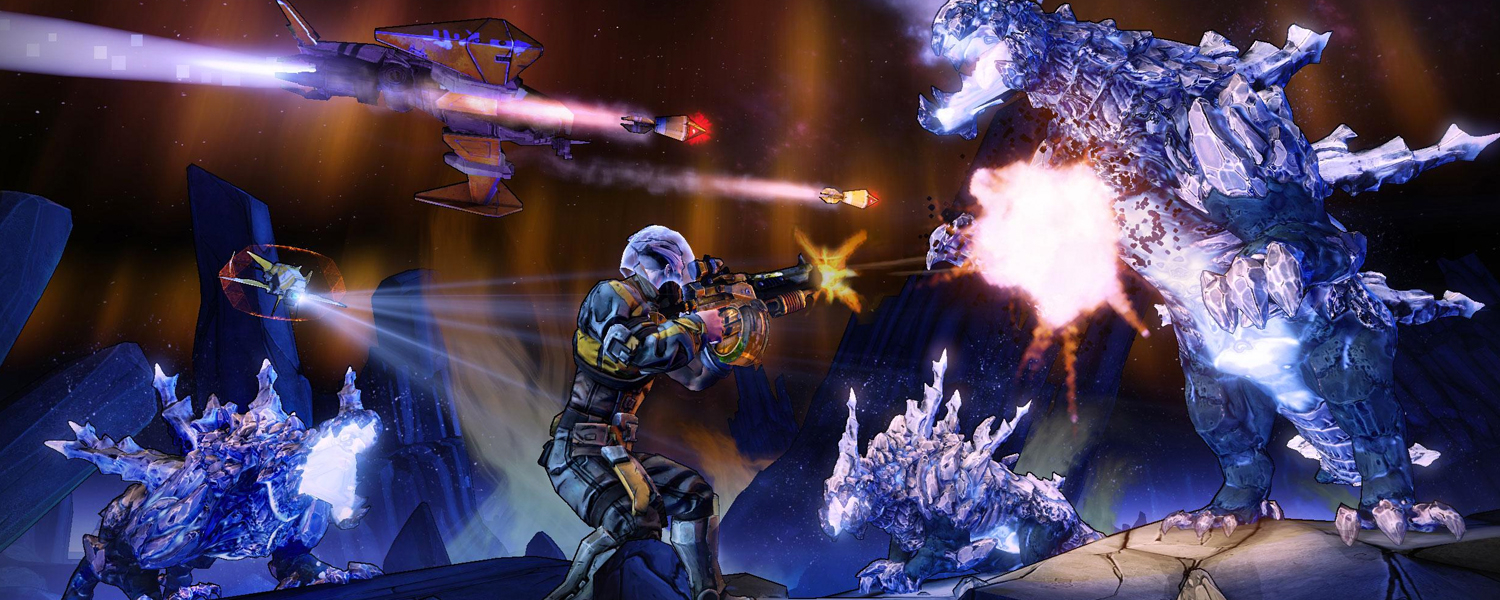
Loot is even worse: one of the cornerstones of any game like Borderlands, there’s no greater thrill than opening a chest and getting a better weapon. But the loot is crushingly disappointing: not once in my 20 hour journey did I get a legendary. Every loot chest contained mostly common’s, no unique or epic items. Vendors happen to have better loot, so in the end it becomes a grind for cash. It’s just a poor system, relying on vendors to give the best loot, and it’s the exact opposite of nearly any other loot-driven game.
The shooting is fine as always; I felt the hitboxes were way worse though; headshots weren’t landing where they should be, critical were wildly inconsistent, it just felt off. The very mechanics of shooting are still great though, and I was glad to see the feel of shooting with pistols is still incredibly satisfying. Lasers and cryo weapons were a neat touch, but they didn’t really elevate the gunplay beyond what was already done in BL2.
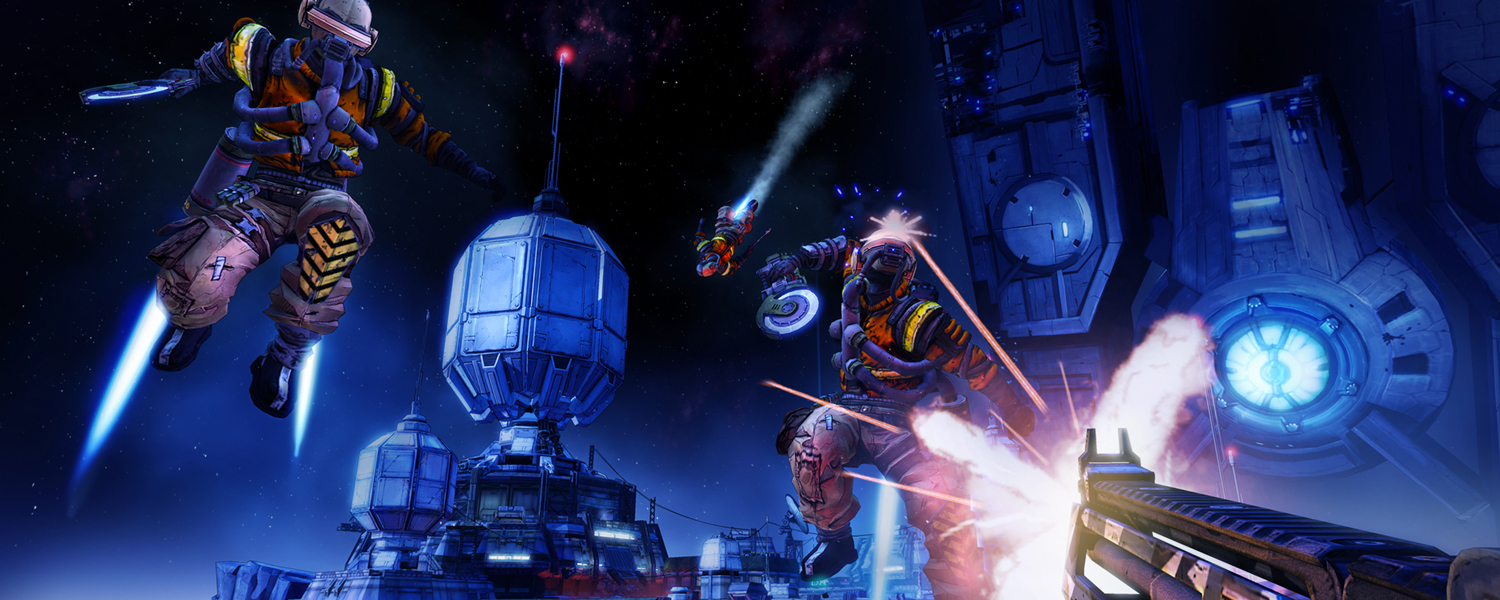
There’s not much here that’s worth playing, but fans of the franchise will still enjoy what’s on offer in terms of gameplay, especially if they’re used to the flaws that were prevalent in BL2. The low gravity mechanics are definitely fun, and the extra weapon classes are not unwelcome here.
There are bugs. A lot of bugs. Bugs that didn’t exist in Borderlands 2. Crashes to desktop, freezing, lack of collision in certain environments, textures missing, it’s strange that these bugs exist. And it’s a definite blow to the game.
